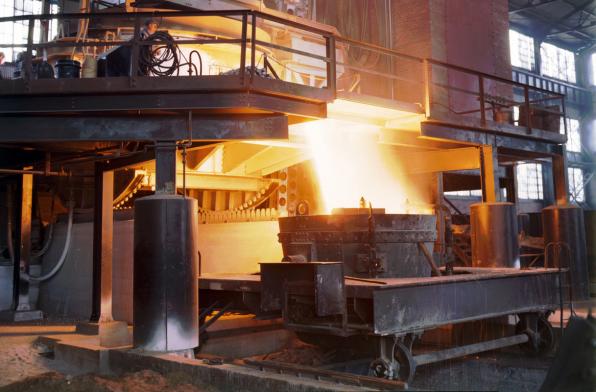According to a report by the state-sanctioned Institute of Geological Mineral Research and Studies (IGMEM), inspectors conducting tests in the Asopos river basin, detected concentrations of heavy metals that in some cases were fifty times over the legal limit. These tests were made on the perimeter of an ELVAL plant, part of the VIOHALCO heavy industry corporation, which accounts for approximately nine per cent of Greece’s total exports.
The Asopos river basin, 60 km to the north of Athens, is a heavily industrialized area, accounting for twenty per cent of Greece’s industrial output. It also provides agricultural products for domestic and international consumption.
Studies have shown that since industrialization in the region began in the late 1960s, there are increased cancer and mortality rates among residents. Their plight even came to the attention of U.S. activist Erin Brockovich, who was portrayed by Julia Roberts in a Hollywood film. Moreover, last June Greece was condemned for violating the residents’ right to health by the European Committee of Social Rights, an institution overseen by the Council of Europe.
But up to now, no direct connection was established between pollution in the Asopos river basin and a specific culprit.

The IGMEM report was published internally in April this year, following an official request by the Ministry of the Environment for on-site measurements and sampling on the perimeter of HALCOR, SYMETAL and ELVAL in the area of Oinofyta. In total there were sampling of water 12 special wells (constructed by the industries on their perimeter) and in two rain ducts.
Hydrochemical tests were made for the presence of 16 elements. For eight of them (aluminium, total chromium, manganese, cobalt, nickel, copper, lead, iron), there were high concentrations, measurements over the officially allowed limits under Greek law. Findings were compared to limits set out to two government decrees (KYA), one specifically for the Asopos basin in 2010 and a general purpose one in 2011), and in a European Union directive which had been made part of Greek law in 2011. Findings were particularly high at the inspection well GS-1, on the perimeter of the Elval company.
Focusing on total chromium and nickel:
For total chromium the concentration must be below 50 micrograms per liter of water but inspectors in some place found concentrations that reach 150 μg/l, three times the limit.
For nickel, the excesses are even bigger and were detected in all points examined, other than the rainwater canals. The official limit should be under 20 μg/l, but inspectors found samples in up to 1.000 μg/l, fifty times over the legal limit.
IGME findings: “… from the site of the factory”
The presence of hexavalent chromium was not measured, as even today the Greek state refuses to set out legal limits for a metal of which the health hazard has been documented across the world.
Another point of note is that inspections took place outside the factories and not on their grounds. Even so, the report repeatedly points out that the pollution is human made. In its last paragraph, the report concludes: “the final, cumulative conclusion is that the excessive findings of certain mineral elements […] are exclusively due to the direct submergence of pollutants on the grounds of the facilities and not to factors of subterranean shifts through the subterranean movement of aquifers […]”.
Regarding aluminium, the report finds that, there were “particles rich in aluminium that come from the grounds of the factory and are not due to lateral transfusion of aluminium from ‘external areas’”.
Response on the part of Viohalco / Stasinopoulos group of companies
ThePressProject requested from Elval and the Viohalco group (to which Elval, Symetal and Halkor belong) to comment on the report. A Viohalco representative told TPP: “At Viohalco we are very sensitive and place great emphasis on the environment. Elval alone has invested 43.8 million euro in the last five years in environmental-related projects. As for the measurements by IGME, we consider them imprecise and that there are methodological problems. On our part, we assigned a German laboratory to make measurements and the results were within allowable limits. We want to be clear on this: We do not pollute!”